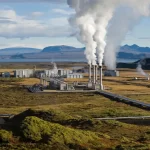Half of the world’s glaciers, particularly the smallest, are at risk of disappearing by the end of this century due to climate change, but limiting climate warming as much as possible helps save other rivers, according to a recent study published Thursday.
This study, published in the prestigious “Science” magazine, presents the most accurate predictions that have been reached to date regarding the future of 215,000 glaciers in the world.
Its authors point out the importance of taking steps to reduce greenhouse gas emissions responsible for climate change, with the aim of limiting the melting of glaciers and its consequences, such as rising sea levels and a shortage of water resources.
“I think our study carries a small glimmer of hope and a positive message, because it confirms that humans can make a difference, and that taking action to solve this issue is important,” study co-author Regine Hook told AFP.
The study is distinguished by the fact that it touched on the direct impact of climate warming within several possible scenarios (1.5°C, 2°C, 3°C, and 4°C) on glaciers, in order to better guide political decisions.
If global warming is limited to 1.5°C above pre-industrial levels, the most ambitious target of the Paris climate agreement, 49% of the world’s glaciers will be gone by 2100.
This loss represents about 26% of the total glacier mass, because smaller rivers will be the first to be affected by warming. The researchers expect the sea level to rise as a result of the melting of ice to about 9 centimeters (a height that will be added to that associated with the melting of the ice caps, for example).
“Areas with relatively little ice, such as the Alps, the Caucasus, the Andes, or the western United States, will lose almost all of their ice by the end of the century, regardless of the potential associated with emissions,” Regine Hook explains, adding that “glaciers One way or another, this is in danger of disappearing.”
And in the event of climate warming of +4 degrees Celsius, the worst-case scenario will occur, as larger glaciers, such as those in Alaska, will be affected by increasing amounts. And 83% of the glaciers will disappear, or 41% of the total ice mass in the world, while the sea level will rise to 15 centimeters.
“9 and 15 centimeters may not seem like big numbers,” Regine Hook, who devoted her career to studying glaciers to “Agence France Presse,” notes, but these two levels are a cause for “great concern,” because the sea level The higher it is, it causes large floods during storms, which causes “more damage”.












